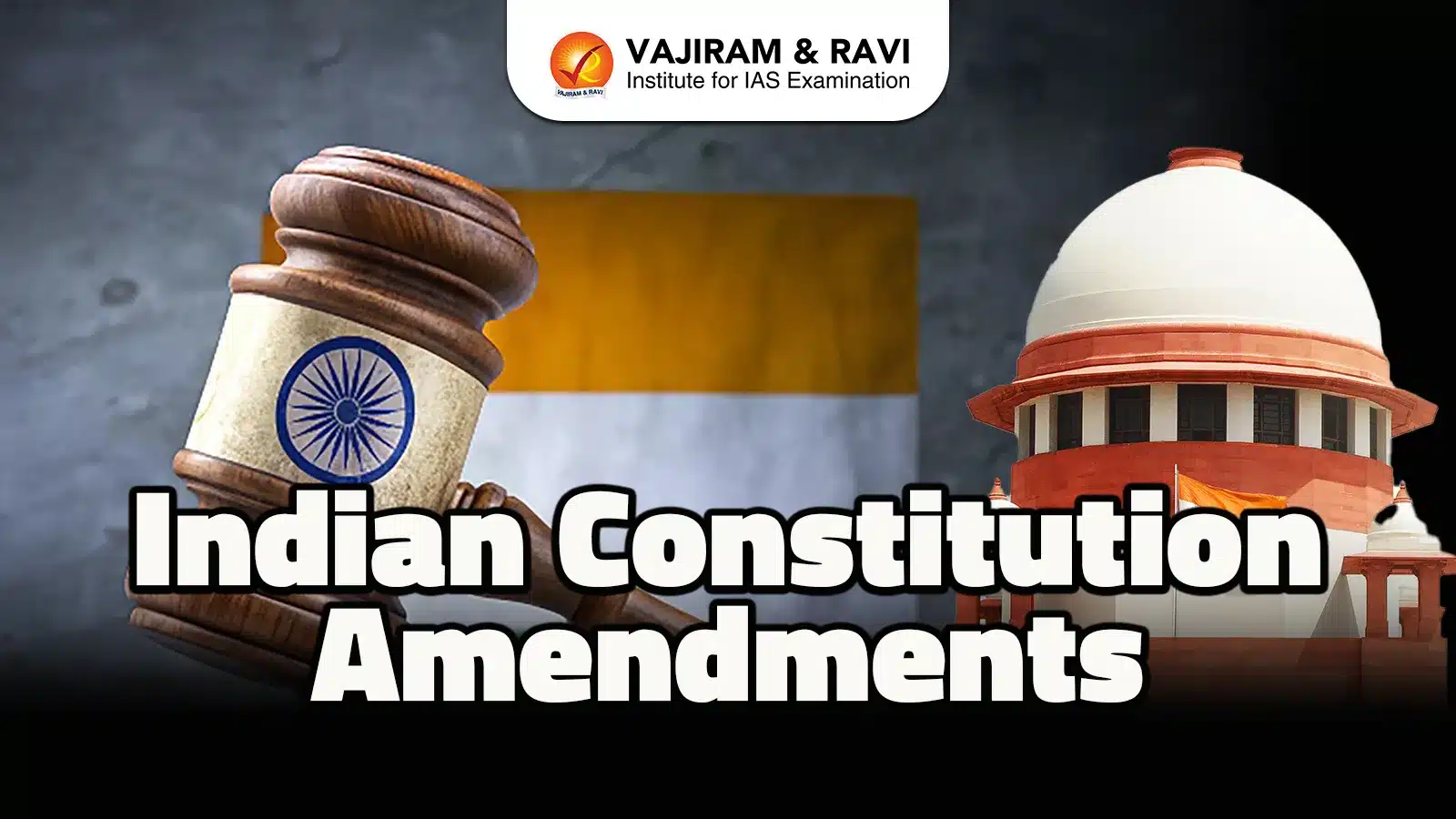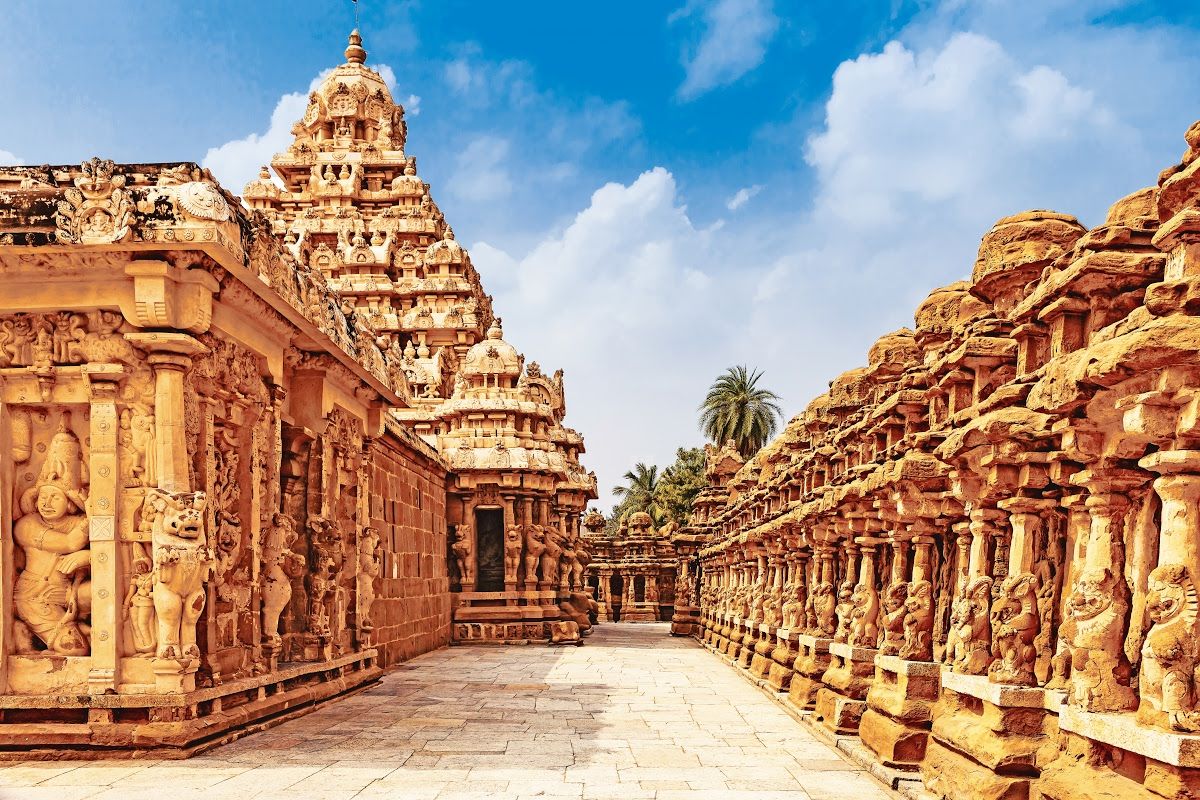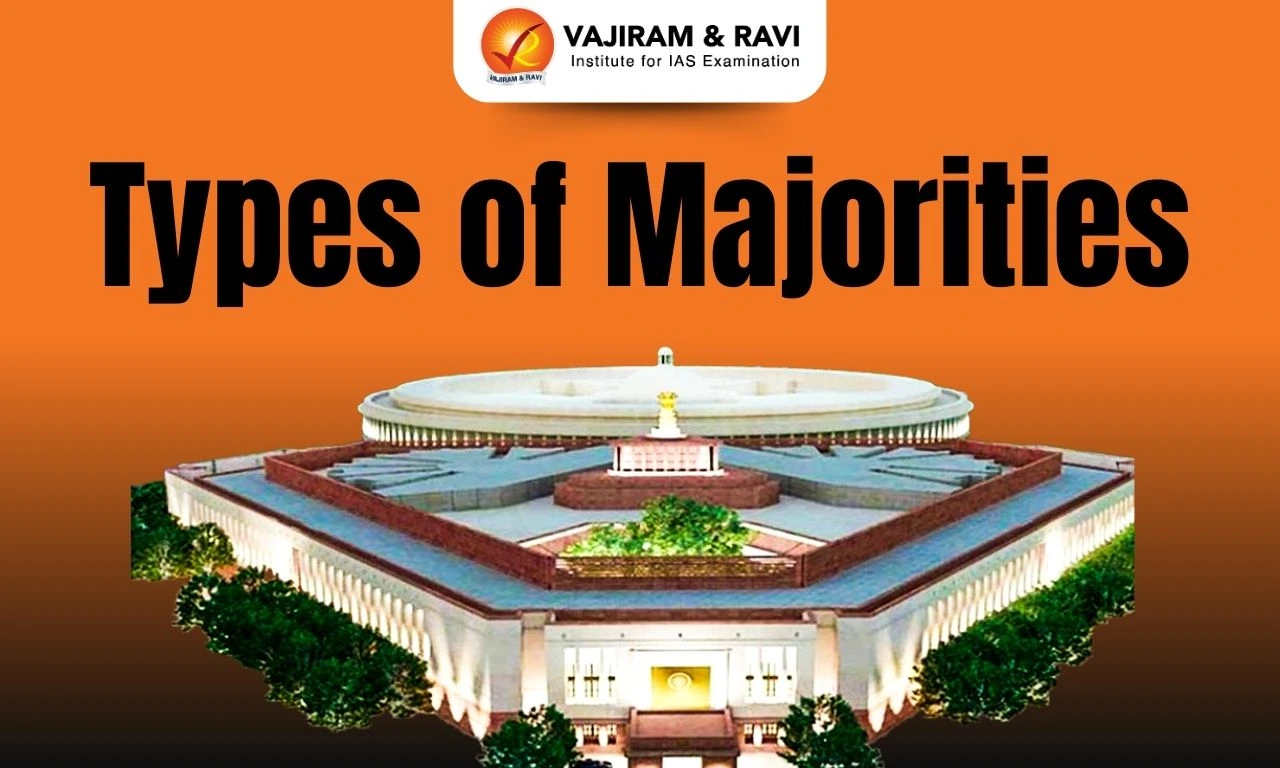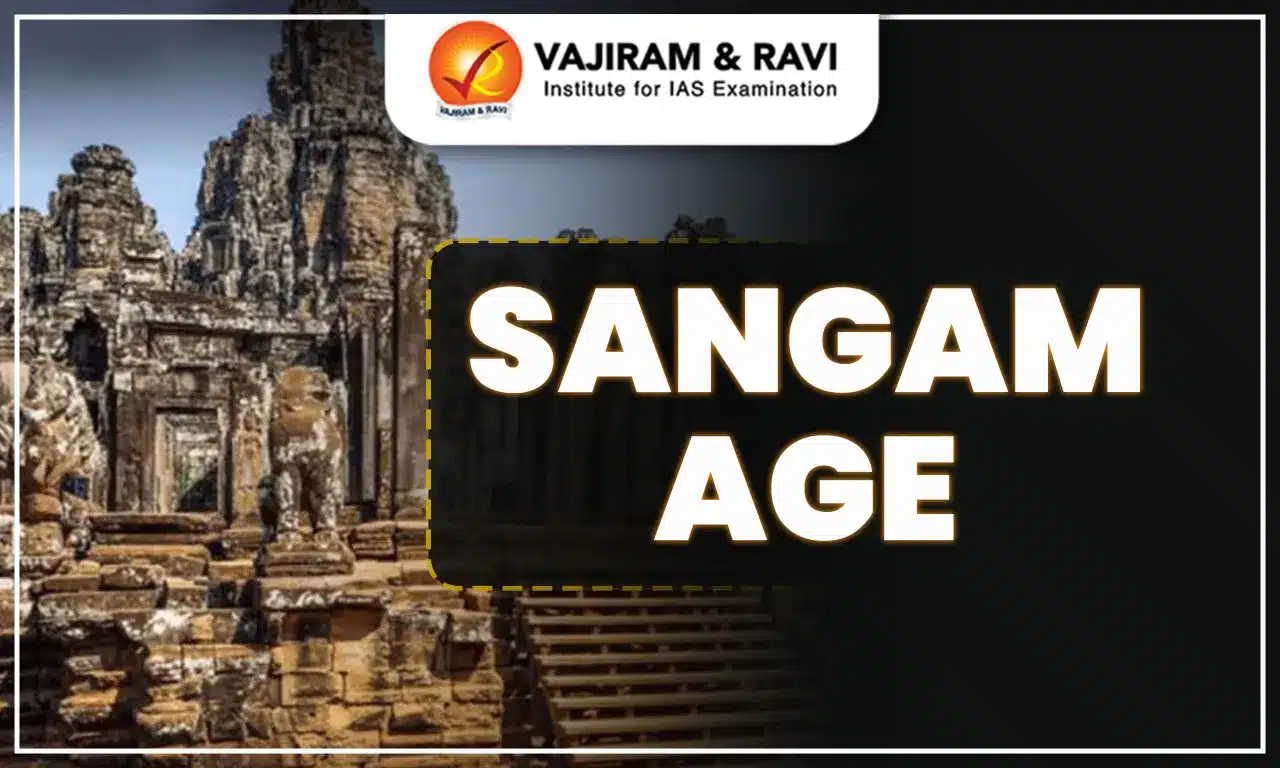What is a Constitutional Amendment?
The process of making changes to the nation's fundamental law i.e. the Constitution is called a Constitutional Amendment.
The amendment procedure laid down for the amendment of India’s Constitution is neither flexible as Britain's nor as rigid as the USA's but a synthesis of both.
- This constitutional amendment procedure reflects the desire of the constituent legislative assembly to put in place a dynamic document.
- Under Article 368 of the Indian Constitution, the Parliament can amend it and its procedures.
- Further, Parliament cannot amend those provisions which form the Basic Structure of the Constitution as ruled by the Supreme Court in the Kesavananda Bharati case (1973).
What are the different ways to amend Indian Constitution?
Different ways in which Constitution can be amended are
- By a simple majority of the Parliament: This refers to the majority of more than 50% of the members present and voting. Many articles in the Constitution mention that these articles can be amended by a simple law of the Parliament. No special procedure for amendment is required in such cases. Some examples are
- Article 2 - Admission or establishment of new states.
- Fifth Schedule - Provisions as to the Administration and Control of Scheduled Areas and Scheduled Tribes.
- Citizenship–acquisition, and termination.
- Elections to Parliament and state legislatures.
- Under Article 368
- By a special majority of the Parliament: Majority of the total membership of each House and a majority of two-thirds of the members of each House present and voting. Examples include Fundamental Rights, Directive Principles of State Policy, etc.
- By a special majority of the Parliament and the ratification of half of the state legislatures: States' ratification is through a simple majority. Provisions related to Federal structure are amended by this method. Examples are the election of the President and its manner, any of the lists in the Seventh Schedule, representation of states in Parliament, Article 368, etc.
What is the procedure to amend the Indian Constitution?
The amendment procedure to amend the Constitution is as follows:
- Amendments can be initiated only by introducing a bill in either house of the Parliament.
- The bill can be introduced either by a minister or by a private member and does not require the prior permission of the President.
- The bill must be passed in each house by a special majority, that is, a majority of the total membership of the house and a majority of two-thirds of the members of the house present and voting.
- Each house must pass the bill separately. If there is any disagreement, there is no provision for a joint sitting of the houses.
- If the bill seeks to amend the provisions of the constitution, it must be ratified by the legislatures of half of the states by a simple majority.
- After the passage of the bill by both houses, it is presented to the President for his assent.
- The president must give his assent to the bill. He can neither withhold his assent to the bill nor return the bill for reconsideration by the Parliament.
- After the President’s assent, the bill becomes a constitutional amendment act.
Major Constitutional Amendments in India List
Due to its flexibility and rigid nature, the Indian Constitution has been amended from time to time. Some major amendments are as follows
| Amendments | Provisions |
| 1st Amendment Act, 1951 |
|
| 42nd Amendment Act, 1976 |
|
| 44th Amendment Act, 1978 |
|
| 52nd Amendment Act, 1985 |
|
| 61st Amendment Act, 1989 |
|
| 69th Amendment Act, 1991 |
|
| 73rd Amendment Act, 1992 |
|
| 74th Amendment Act, 1992 |
|
| 86th Amendment Act, 2002 |
|
What are the limitations on the amending power of the Parliament?
The amending power of the Parliament is limited by the doctrine of Basic Structure, propounded by the Indian Judiciary on 24th April 1973 in the Keshavananda Bharati case so that the ‘Basic Structure of the Constitution’ cannot be amended.
Thus, amendments under Article 368 are valid as long as they do not violate the basic structure of the Constitution. Further, the Supreme Court also held Article 368 as part of the Basic Structure.
Some of the significant judgments regarding the limitations of amending power of the Parliament are
- Minerva Mills vs. Union of India (1980): The Supreme Court invalidated provisions of the 42nd Constitutional Amendment Act, 1976 that declared no limitation to the constituent power of Parliament under article 368. The Supreme Court ruled that the Parliament cannot take away the power of ‘judicial review’ as it is a part of the ‘Basic Structure’.
- L. Chandra Kumar v. Union of India (1997): The Supreme Court held that Tribunals (Article 323A and 323B) are not a substitute for the power of judicial review that the Constitution has bestowed upon the High Courts.
- I.R. Coelho v State of Tamil Nadu (2007): The Supreme Court held that Parliament cannot increase the amending power by amendment of Article 368 and destroy and damage the fundamentals of the Constitution.
- The Constitution (99th Amendment) Act, 2014: provided for a National Judicial Appointment Commission (NJAC), was struck down by the Supreme Court on the grounds that it violated the “independence of the judiciary”, which is a part of Basic Structure.
What are the criticisms of the amendment procedure under the Indian Constitution?
The amendment procedure of the Constitution has been criticized on the following grounds:
- States have no power to initiate amendments: The power to initiate an amendment to the Constitution lies with the Parliament. The state legislatures cannot initiate any bill.
- Exception: States can pass a resolution requesting the Parliament for the creation or abolition of legislative councils in the states.
- Parliament has powers to amend major parts: The major part of the Constitution can be amended by the Parliament alone. Only in a few cases the consent of half of the state legislatures is required.
- No time frame for ratification: The Constitution does not prescribe the time frame within which the state legislatures should ratify or reject an amendment submitted to them.
- No provision for joint sitting: There is no provision for holding a joint sitting of both Houses of Parliament if there is a deadlock over the passage of a constitutional amendment bill.
- The process of amendment is similar to that of a legislative process. Except for the special majority, the constitutional amendment bills are to be passed by the Parliament in the same way as ordinary bills.
Although having provisions to amend the constitution was progressive to the fathers of our nation, it is important that such provisions are not misused. Misuse could lead to undue legislative or executive authority that could rip apart the fabric of our society. An appropriate balance is thus needed to be maintained to ensure the living nature of our constitution.
Indian Constitution Amendments UPSC PYQs
Q1: Consider the following subjects under the Constitution of India: (UPSC Prelims 2025)
- List I-Union List, in the Seventh Schedule
- Extent of the executive power of a State
- Conditions of the Governor's office
For a constitutional amendment with respect to which of the above, ratification by the Legislatures of not less than one-half of the States is required before presenting the bill to the President of India for assent?
a) 1 and 2 only
b) 2 and 3 only
c) 1 and 3 only
d) 1, 2 and 3
Q2: Consider the following statements (UPSC Prelims 2013)
- An amendment to the Constitution of India can be initiated by an introduction of a bill in the Lok Sabha only.
- If such an amendment seeks to make changes in the federal character of the Constitution, the amendment also requires to be ratified by the legislature of all the States of India. Which of the statements given above is/are correct?
(a) 1 only
(b) 2 only
(c) Both 1 and 2
(d) Neither 1 nor 2
Q3: “Parliament’s power to amend the Constitution is a limited power and it cannot be enlarged into absolute power.” In the light of this statement explain whether Parliament under Article 368 of the Constitution can destroy the Basic Structure of the Constitution by expanding its amending power? (UPSC Mains 2019)
Last updated on January, 2026
→ Check out the latest UPSC Syllabus 2026 here.
→ Join Vajiram & Ravi’s Interview Guidance Programme for expert help to crack your final UPSC stage.
→ UPSC Mains Result 2025 is now out.
→ UPSC Notification 2026 is scheduled to be released on January 14, 2026.
→ UPSC Calendar 2026 is released on 15th May, 2025.
→ UPSC Prelims 2026 will be conducted on 24th May, 2026 & UPSC Mains 2026 will be conducted on 21st August 2026.
→ The UPSC Selection Process is of 3 stages-Prelims, Mains and Interview.
→ UPSC Result 2024 is released with latest UPSC Marksheet 2024. Check Now!
→ UPSC Toppers List 2024 is released now. Shakti Dubey is UPSC AIR 1 2024 Topper.
→ Also check Best IAS Coaching in Delhi

















